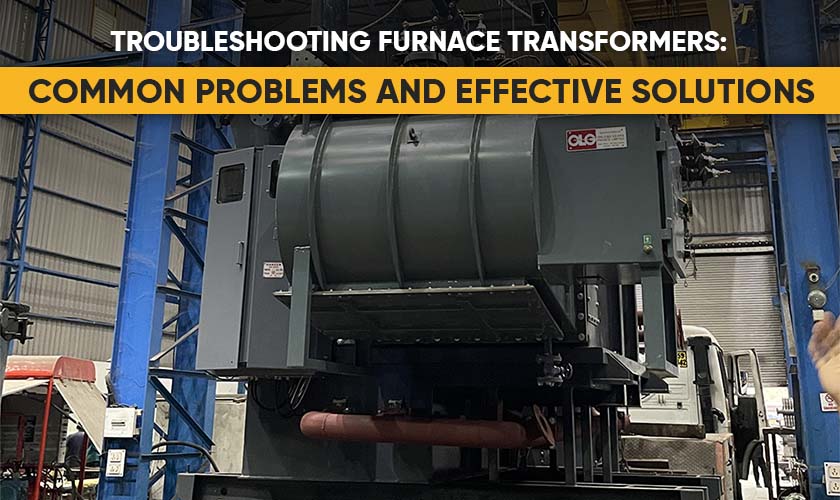Transformers are considered to be an integral part of any industrial operation. It is a source of energy and takes the lead in ensuring the seamless operation of electrical systems, especially when the supply voltage differs from the operating voltage of devices or machinery.
Selecting the right transformer is essential to optimizing performance, ensuring safety, and meeting your specific operational requirements. This guide will walk you through the key considerations for buying a transformer, empowering you to make an informed decision.
A Thorough Guide For Buying A Transformer
1. Understanding Your Requirements
Before delving into the technicalities, assess your operational needs. Determine the primary purpose of the transformer—whether it’s for voltage conversion, power distribution, isolation, or measurement. Understanding these requirements sets the foundation for selecting the appropriate type of transformer.
2. Input and Output Voltages
The input (primary) voltage is the power supplied to the transformer, while the output (secondary) voltage is what the transformer delivers to the connected device. Ensuring these match the supply voltage and the device’s input voltage is crucial to prevent damage and maintain efficiency.
Step-Up Transformers: Increase voltage from primary to secondary.
Step-Down Transformers: Decrease voltage from primary to secondary.
Evaluate your supply and device voltage requirements to decide between these types.
3. AC Frequency
The frequency of the Alternating Current (AC) supply varies by country. For instance, it is 60 Hz in the United States and Canada and 50 Hz in many other parts of the world. Choose a transformer compatible with the local AC frequency to ensure proper functionality and longevity.
4. Power Rating
The power rating, expressed in kVA (kilovolt-amperes) or kW (kilowatts), represents the maximum power the transformer can handle without overheating. Calculate the power rating by considering the voltage and current supplied to the transformer. Selecting a transformer with an appropriate power rating ensures safety and prevents performance issues.
5. Phase Requirements
Transformers come in two primary configurations:
Single-Phase Transformers:Ideal for smaller applications or when the power source is single-phase.
Three-Phase Transformers:Suitable for industrial and large-scale applications where power is supplied from a three-phase source.
Opt for a configuration that aligns with your power supply system and load requirements.
6. Cooling Mechanism
Transformers generate heat during operation, making an effective cooling system essential. Consider the following types:
Dry-Type (Air-Cooled):Suitable for indoor applications or locations with minimal environmental exposure.
Liquid-Cooled:This method uses oil or other liquids to dissipate heat, making it ideal for high-capacity or outdoor applications.
Liquid Vapor Condensation:Combines liquid cooling with a low vaporization point, offering high efficiency in demanding environments.
Evaluate the operational environment to determine the best cooling method for your transformer.
7. Winding material
The transformer's windings are typically made of either copper or aluminium. Each material has its advantages:
Copper Windings:Offer superior conductivity, efficiency, and durability. Best for high-performance applications.
Aluminium Windings:Lighter and more cost-effective, suitable for weight-sensitive applications where efficiency is less critical.
Choose the material based on your priorities: efficiency, cost, or weight.
8. Core Type
Transformers are classified into two core types:
Closed-Core Transformers:Feature windings that surround the core. They provide better insulation but require more copper and are less efficient than shell-core types.
Shell-Core Transformers:Have the core surrounding the windings. They offer greater efficiency and reduced copper usage but may compromise insulation.
Consider insulation and efficiency requirements to select the appropriate core type.
9. Purpose and Application
The application of the transformer largely determines its type. Below are some common types and their uses:
Isolation Transformers:Separate circuits to enhance safety and reduce interference.
Distribution Transformers:Operate at lower voltages for power distribution.
Power Transformers:Handle high voltages for industrial and large-scale applications.
Auto-Transformers:Compact and efficient but lack insulation between primary and secondary windings.
Measurement Transformers:Used for monitoring current or voltage in circuits.
Understanding the specific application ensures you select the right type of transformer for your needs.
10. Manufacturer Reputation
A reliable manufacturer ensures quality, durability, and compliance with safety standards. Look for manufacturers with a proven track record, customer testimonials, and adherence to industry certifications.
For example, Makpower Transformer is a trusted name in transformer manufacturing and provides high-quality solutions tailored to diverse industrial and commercial needs. Their expertise ensures you receive a product that meets your specifications and delivers long-term performance.
11. Additional Considerations
Cost Efficiency:
While staying within budget is important, prioritize quality and long-term reliability over short-term savings.
Installation and Maintenance:To maximize your transformer's lifespan and efficiency, ensure proper installation and schedule regular maintenance.
Compliance:Verify that the transformer meets local safety and environmental regulations.
Final Thoughts
Choosing the right transformer is a critical decision that impacts your electrical systems' efficiency, safety, and reliability. By considering factors like voltage, frequency, power rating, cooling mechanism, and manufacturer reputation, you can ensure a perfect match for your requirements.
So, are you ready to Find Your Perfect Transformer?
Makpower Transformer offers a wide range of premium-quality transformers for diverse industrial and commercial applications. Contact us today to discuss your requirements and receive expert guidance in selecting the ideal transformer.





